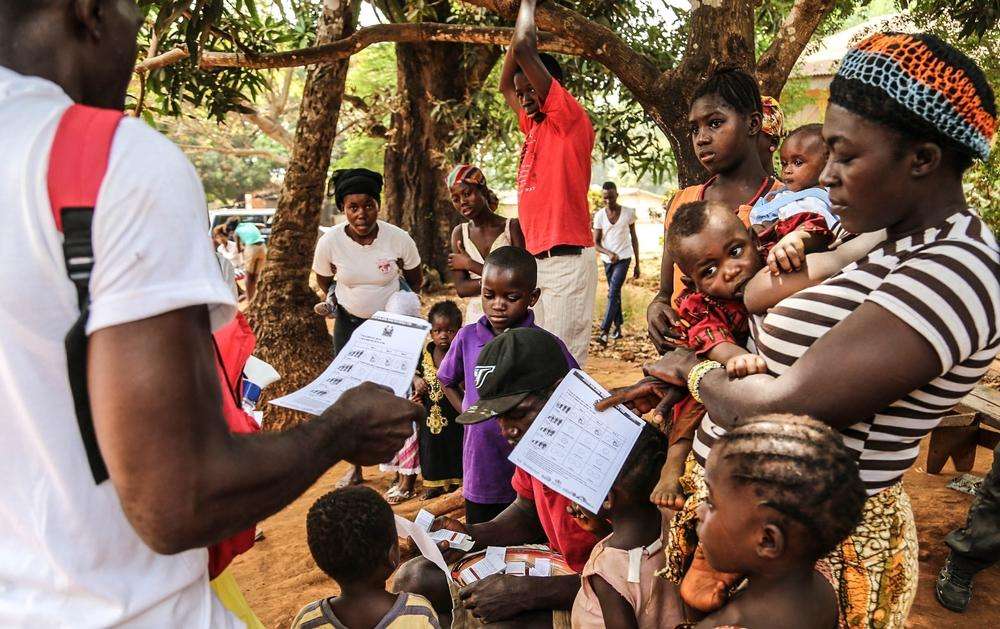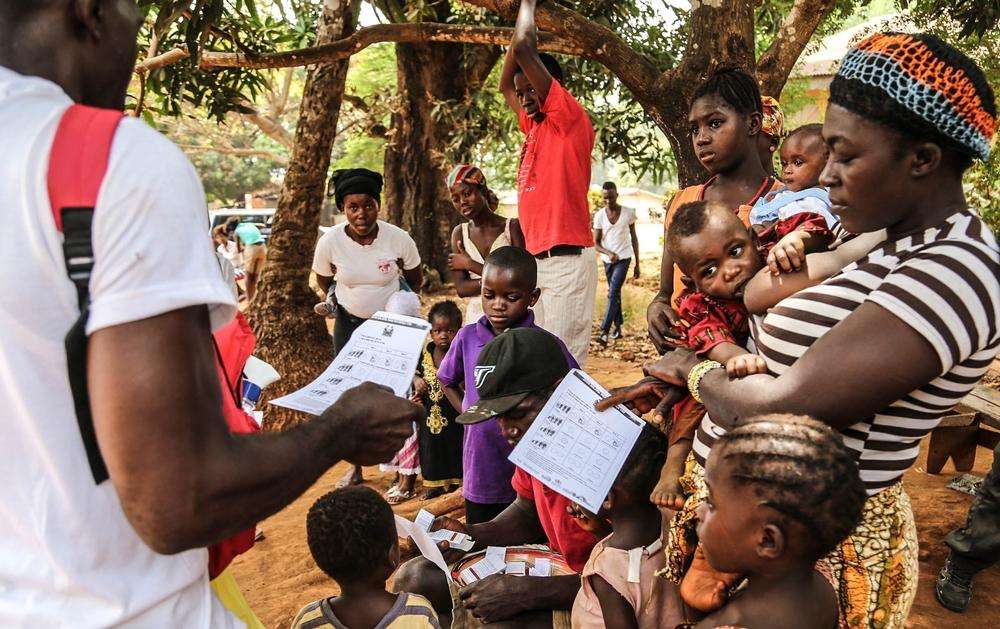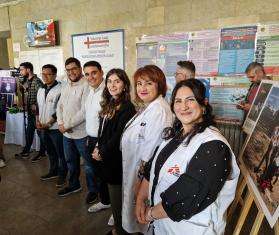In Murray Town, Sierra Leone, where Isatu Koroma and Angela Taylor live, the ongoing Ebola outbreak has resulted in quarantined houses surrounded by tape and checkpoints manned by thermometer-wielding volunteers. Schools are closed and there are signs on the street asking people not to touch each other. Isatu and Angela are both anxious about a disease that causes fever and can be lethal. But which one is it?
More than 3,000 deaths and 10,000 cases suggest it is Ebola, but the correct answer is malaria. In 2013, there were more than 1.7 million cases of malaria in Sierra Leone, a small country in West Africa with a population of six million. According to the World Health Organization (WHO), 4,326 people died from the disease that year.
“This girl had malaria. And this woman. And this guy,” says Ibrahim Sesay, who lives in a ramshackle building in Freetown together with twenty-four other people. Isatu Koroma turns her head and gets up. “I had malaria several times, continuously,” she says. “I was very affected. I used to go often to the hospital.”
Murray Town is also home to Angela Taylor and her four children. “Malaria was and is our main health problem,” she says. Previously, her family had to pay 25,000 Sierra Leonean leones (more than five euros) for each malaria treatment. “But Ebola is also a very serious problem,” adds Angela. “We are praying not to catch it. People are very conscious about it.”
Isatu and Angela received two of the 1.8 million antimalarial treatments delivered between January 16 and 19 by teams from Doctors Without Borders/Médecins Sans Frontières (MSF) working in conjunction with the Ministry of Health. This was the largest-ever distribution of antimalarials in an Ebola outbreak.
The chosen drug is artesunate amodiaquine, which can be used both to prevent and to treat malaria. The goal is twofold: to reduce malaria cases, and to decongest Sierra Leone's health care system, already overwhelmed by the Ebola epidemic. Since both diseases have similar symptoms (fever, fatigue, headaches), many patients with malaria go to treatment centers fearing that they have contracted Ebola. Many find it impossible to get treatment for malaria at local clinics because health staff are afraid that they have Ebola.
Organizing a distribution on this scale takes a lot of effort, and the Ebola epidemic makes it even more complex. Over 5,000 community health workers presented themselves at 119 clinics and health centers, where the drugs were stored, to distribute them door-to-door, in order to avoid people having to crowd together or wait in long queues, common features of many distributions. The target was the Western Area, also known as Freetown Peninsula, which includes Freetown and its surrounding districts.
The antimalarials were delivered to overcrowded slums like Mabella, where it can be impossible to keep a safe distance from other people, and to fishing villages like Tombo, where the distribution was easier to coordinate with local communities because it is less densely populated. “You need to explain very well how and why to take the drugs, otherwise you could be boosting possible side-effects or people could refuse to take them,” says MSF information, education, and communication officer Ramiro García. Local radio stations aired programs to inform people about the distribution and to answer listeners’ questions.
This distribution follows a first round in December, and it is part of a larger campaign supported by the Ministry of Health and Unicef that will target 2.5 million people.
In Isatu and Angela’s neighborhood, where malaria is the main health problem, there has only been one case of Ebola, but everyone knows about it. “It was a nurse. She lived down there, but she died,” says Angela.
Suddenly, one of the neighbors listening in on the conversation cuts in. “When will this Ebola epidemic be over?” he asks MSF workers, who shrug their shoulders. No one has the precise answer, but everyone in Murray Town knows that when Ebola goes away, malaria will still be there.





